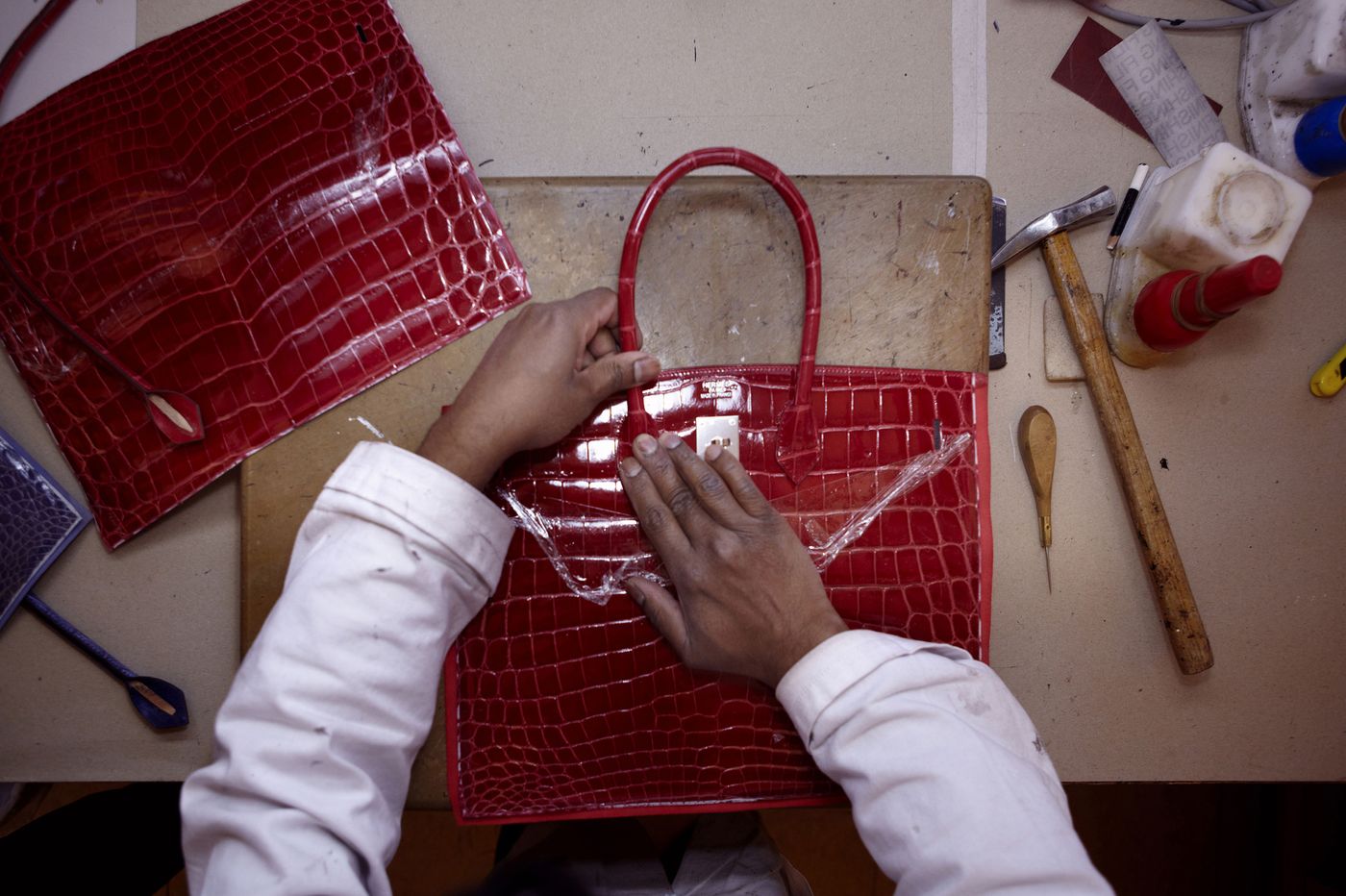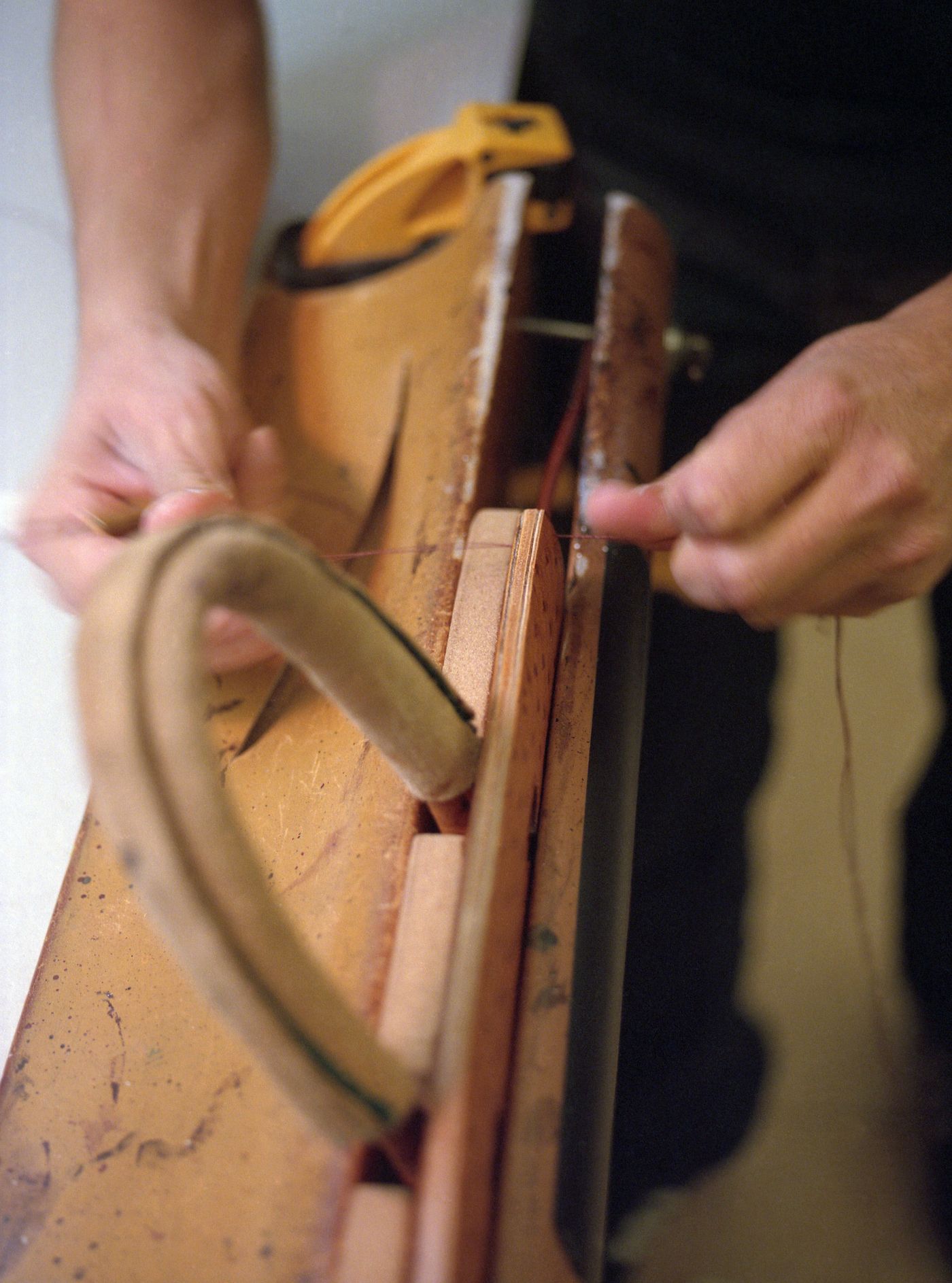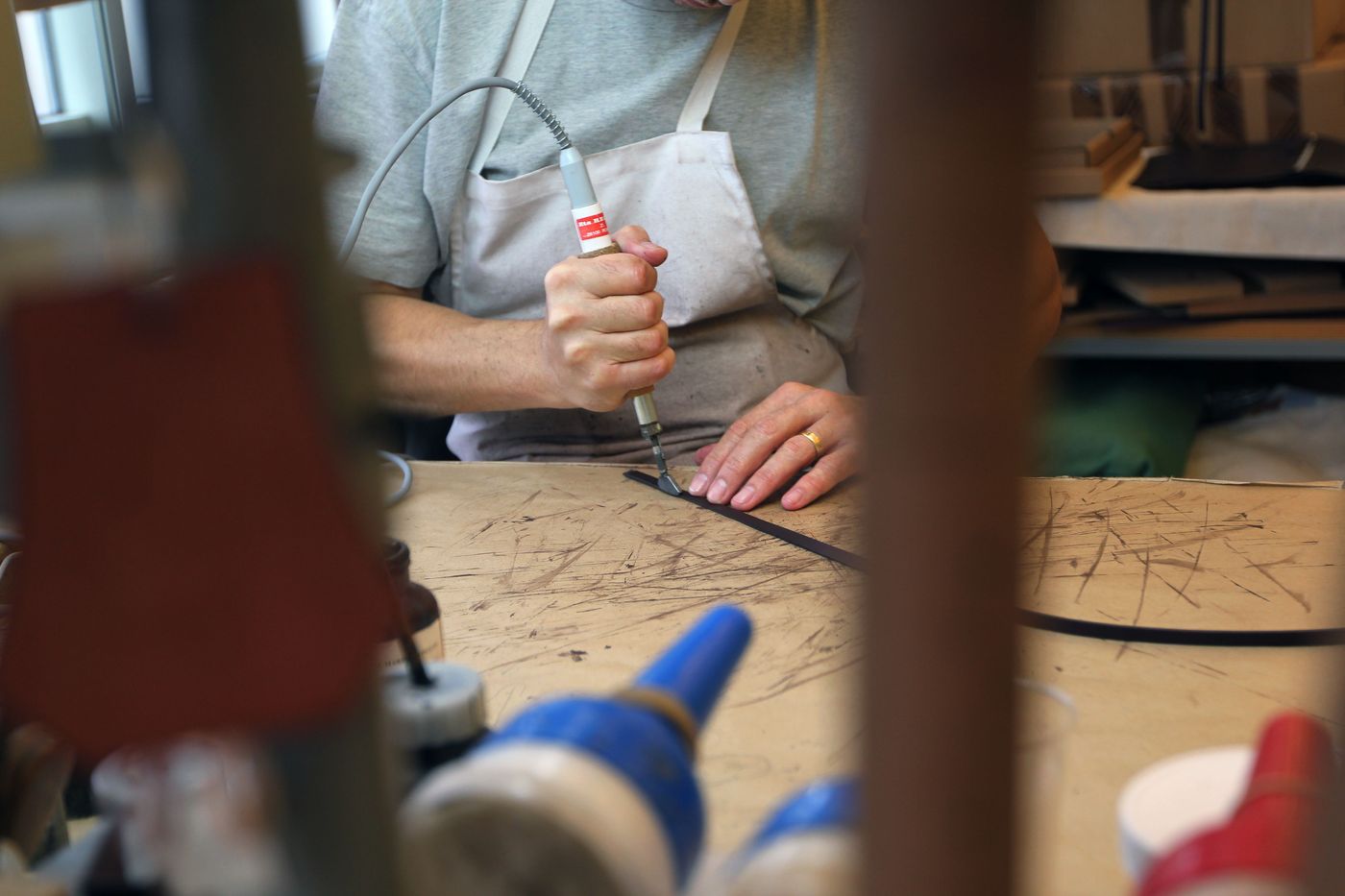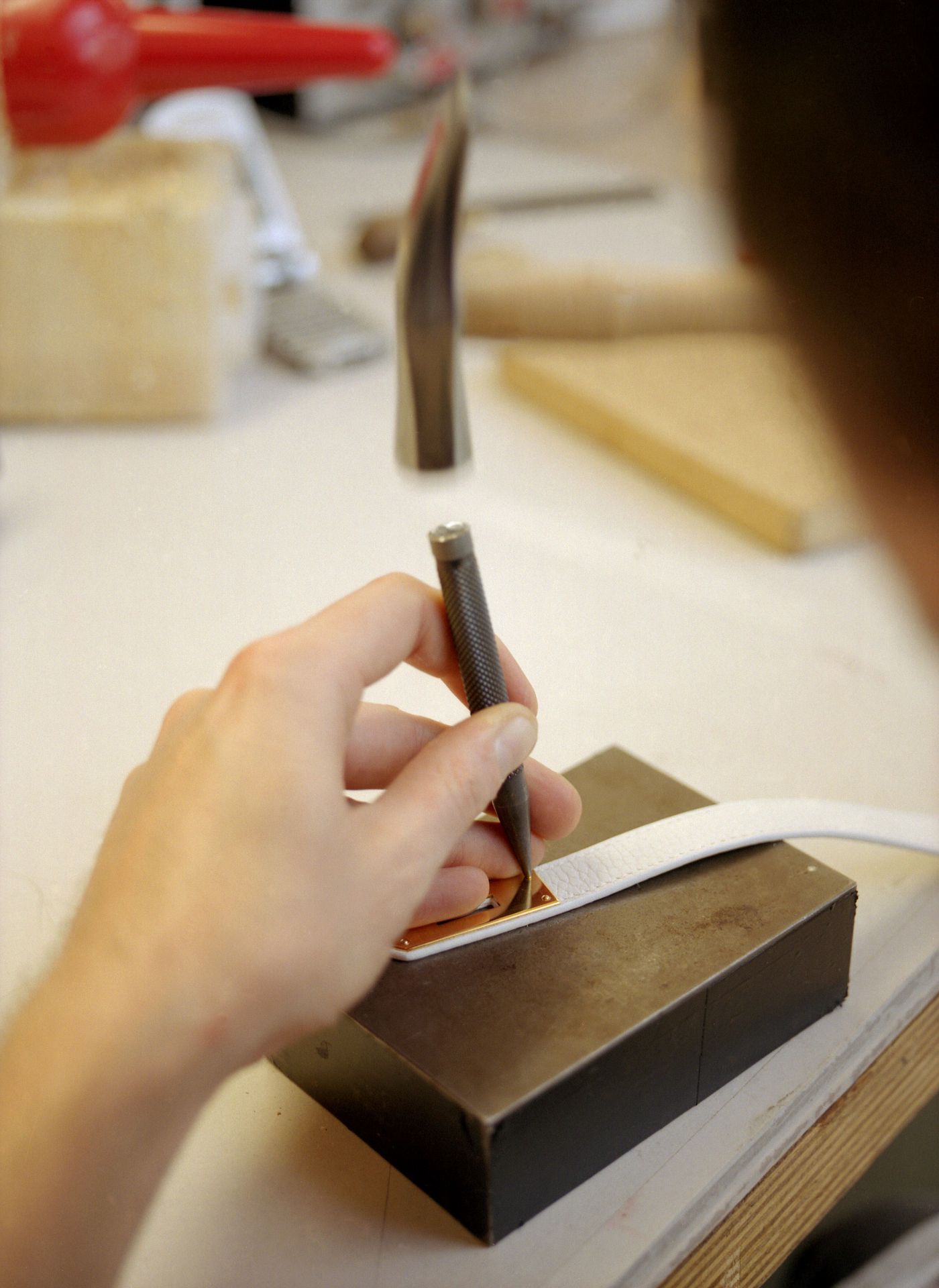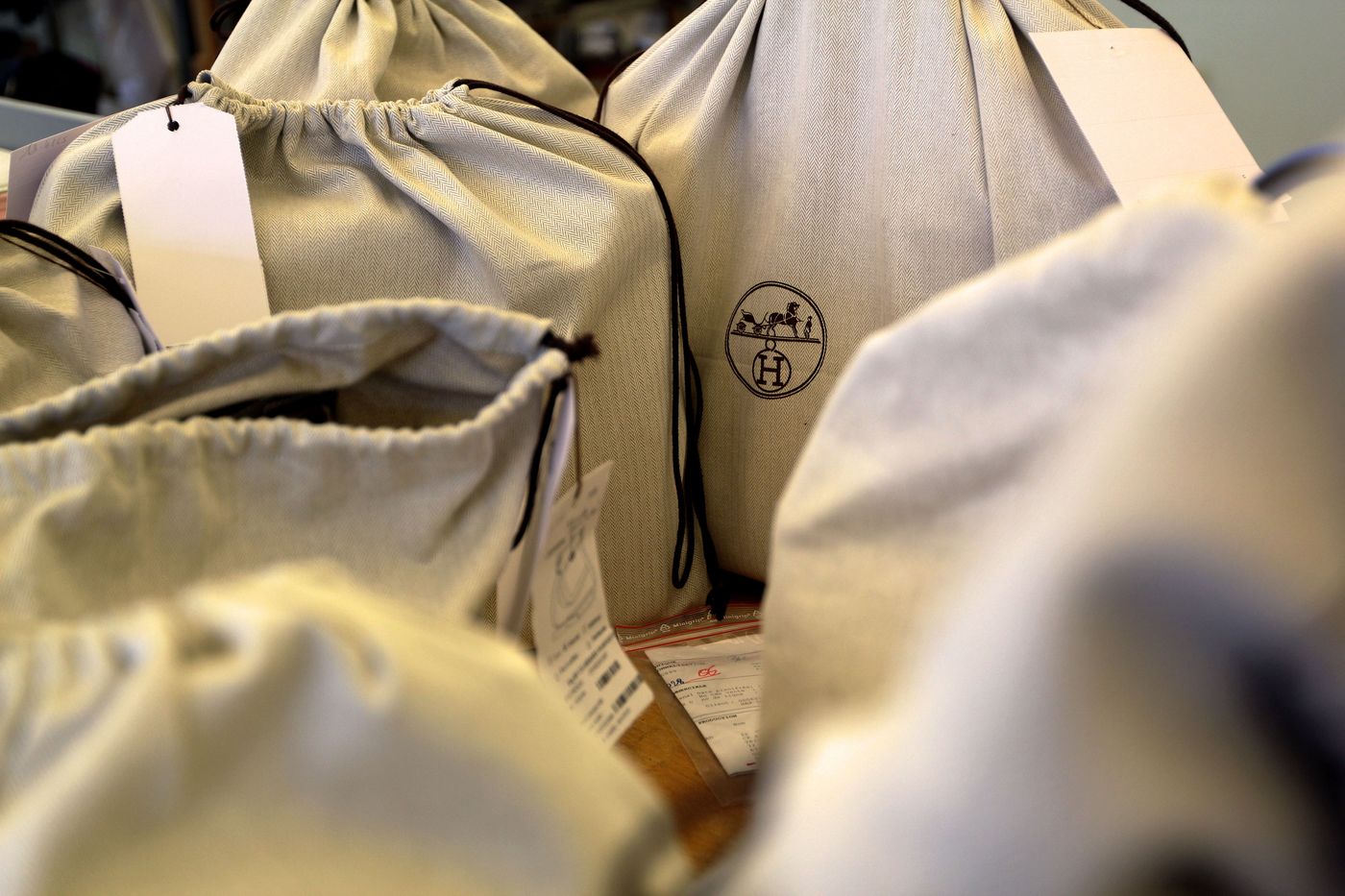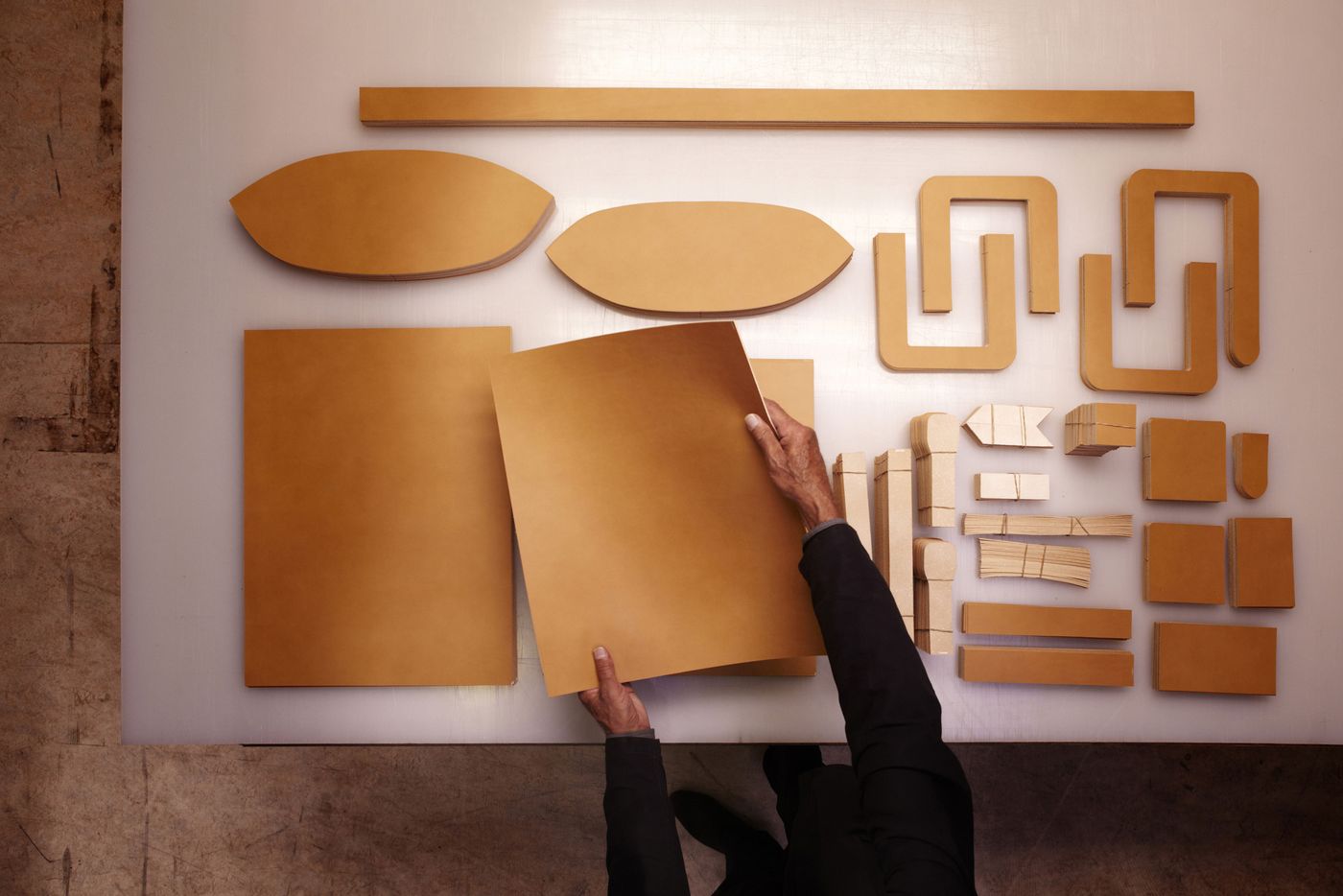
A Tour Inside The Ateliers Hermès in Pantin, France
Words by Costas Voyatzis
Location
Pantin, France
A Tour Inside The Ateliers Hermès in Pantin, France
Words by Costas Voyatzis
Pantin, France
Pantin, France
Location
Here’s one thing you’ll learn not to do when visiting the Hermès workshop in Paris: leave your bag on the floor! Once you’ve toured their Rue du Faubourg Saint-Honoré boutique, you’ll realize that treating your leather with the respect it deserves is like paying tribute to the craftsman who made it — especially if it comes from Hermès.
On a typically grey Parisian morning, Hermès whisked me away to suburban Pantin, home to some of the world’s biggest luxury houses. But on October 24th, 2012, I only had eyes for Hermès. Visiting their fragrant workshop is a true sensory experience. Your eyes, your nose, your ears — they’re all part of a luxurious journey.
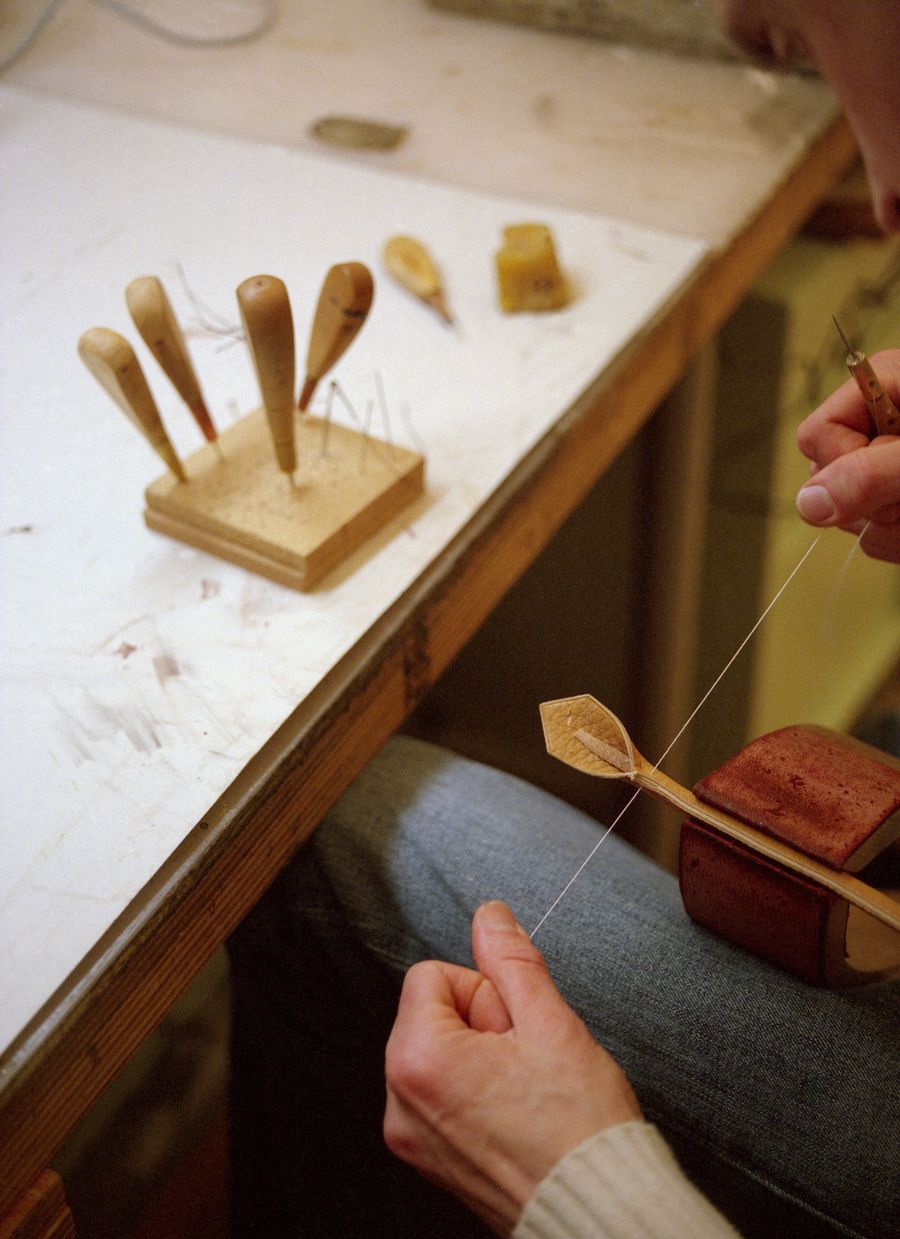
Photo by Jérôme GALLAND. © Hermès.
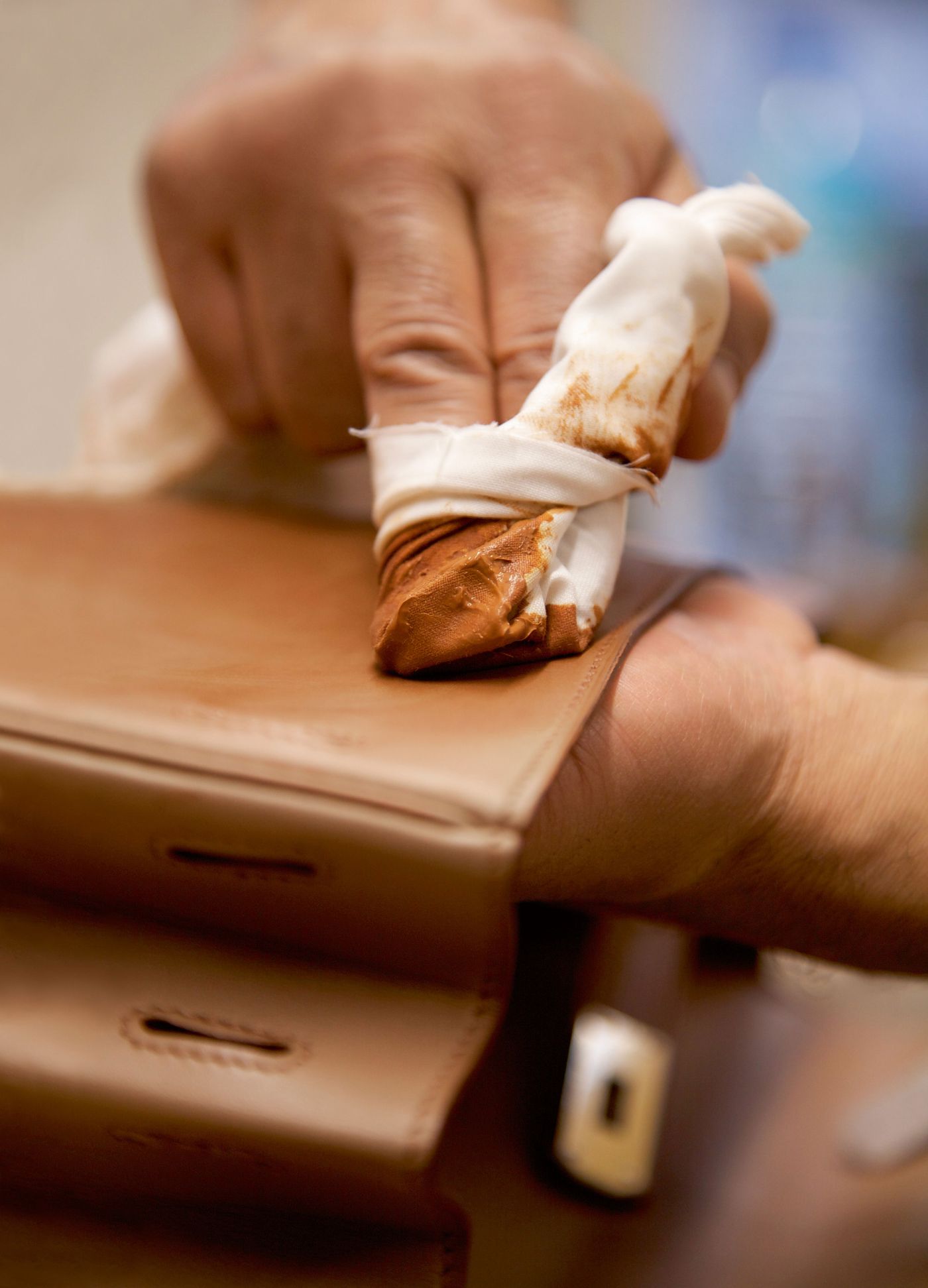
Photo by Alfredo PIOLA, © Hermès.

Photo by Costas Voyatzis, © Yatzer.
First, there’s the rhythmic tap-tap-tapping that follows your every step, a sign of industrious hands at work. Then there’s the unmistakable scent of leather, from the simplest and supplest calfskins to rare finds like ostrich legs, rainbow lizard, and reverse crocodile, all sourced by Hermès’ experienced leather-hunters. On the ground floor of this charming building, designed by architect François Ceria, a monitor is strategically placed by the elevators, live-streaming customers shopping in the Paris flagship store so the leather-workers can follow the fate of their beloved bags — even from 6.4 kilometers away.
The beauty of the material calls for the perfection of the work, even if it can’t be seen. The bottom must be worthy of the top, and the inside the outside. — Colette, 1942.
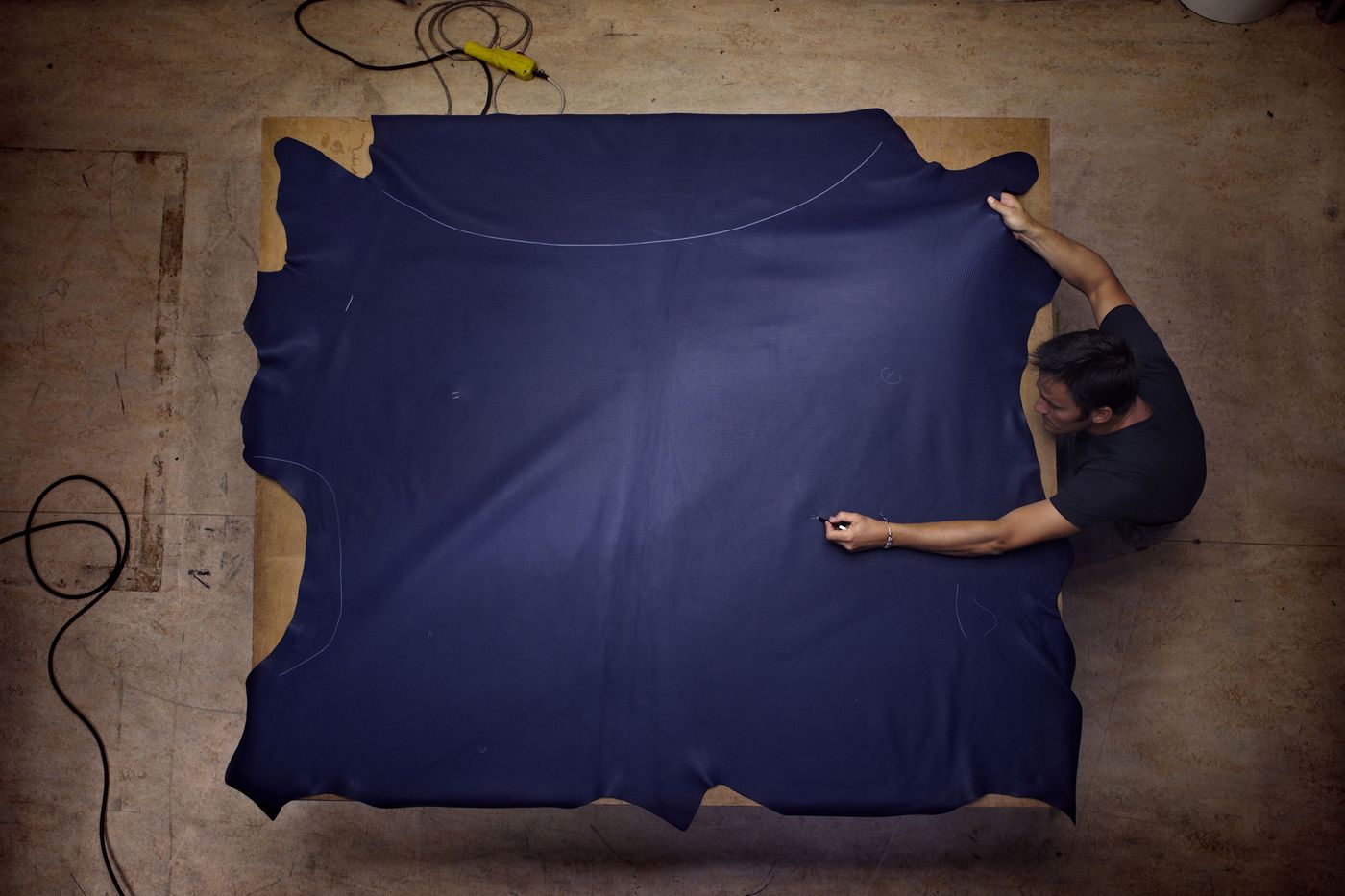
Photo by LUCIE & SIMON, © Hermès.
Hermès artisans claim they can recognize their handiwork on celebrities or pick out their own pieces from a line-up any day of the week — and I, for one, am willing to believe it. As for the workshop itself, the prevailing sentiment is one of enduring love: each bag is crafted by a single artisan from start to finish, which explains why they only turn out two pieces a week. No leather-worker is allowed to intervene in another colleague’s work, and each artisan has a personal set of tools, which they eventually take home upon retirement. It goes without saying that the mere suggestion of placing your bag — no matter its origins or price — on the floor to flex your tired muscles is considered a near-criminal offense!
It doesn’t take long to realize that the Hermès universe is ruled by discipline and precision, but that doesn’t mean it lacks imagination. Of all the bespoke beauties the workshop has produced over the years — from portable bars to machetes, aviator caps, Barbie clothes, and a leather-clad Leica — the green apple bag still holds a special place in their hearts. “The client wanted to gift it to someone who constantly ate apples,” recalls Parisian bag maker Valerie Benardeau. “The bag’s inner layer was made of beaten silver, and its exterior was leather. As the bag was being made, apples were constantly brought in to test whether the evolving design would fit perfectly!”
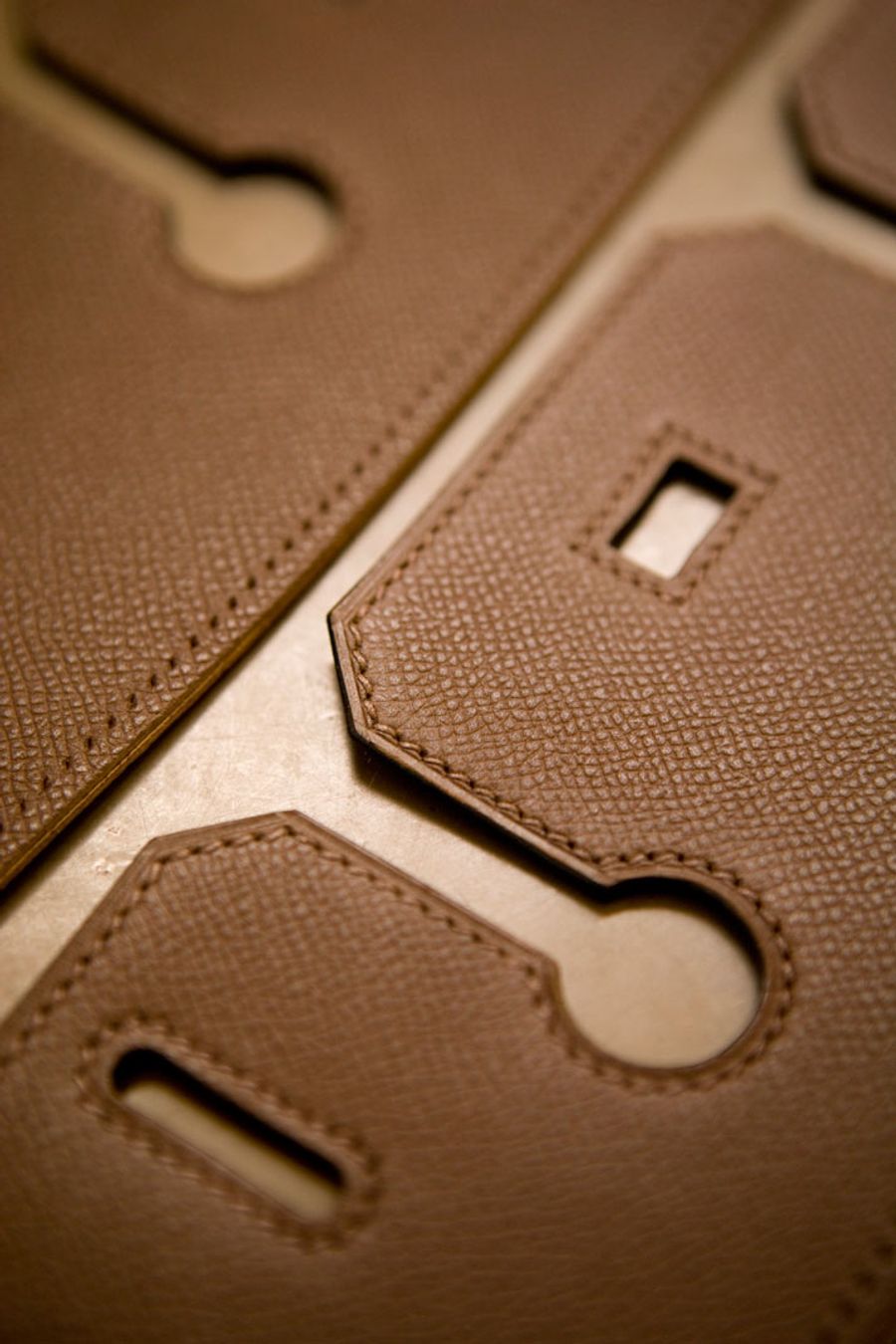
photo © Jérôme GALLAND, Hermès
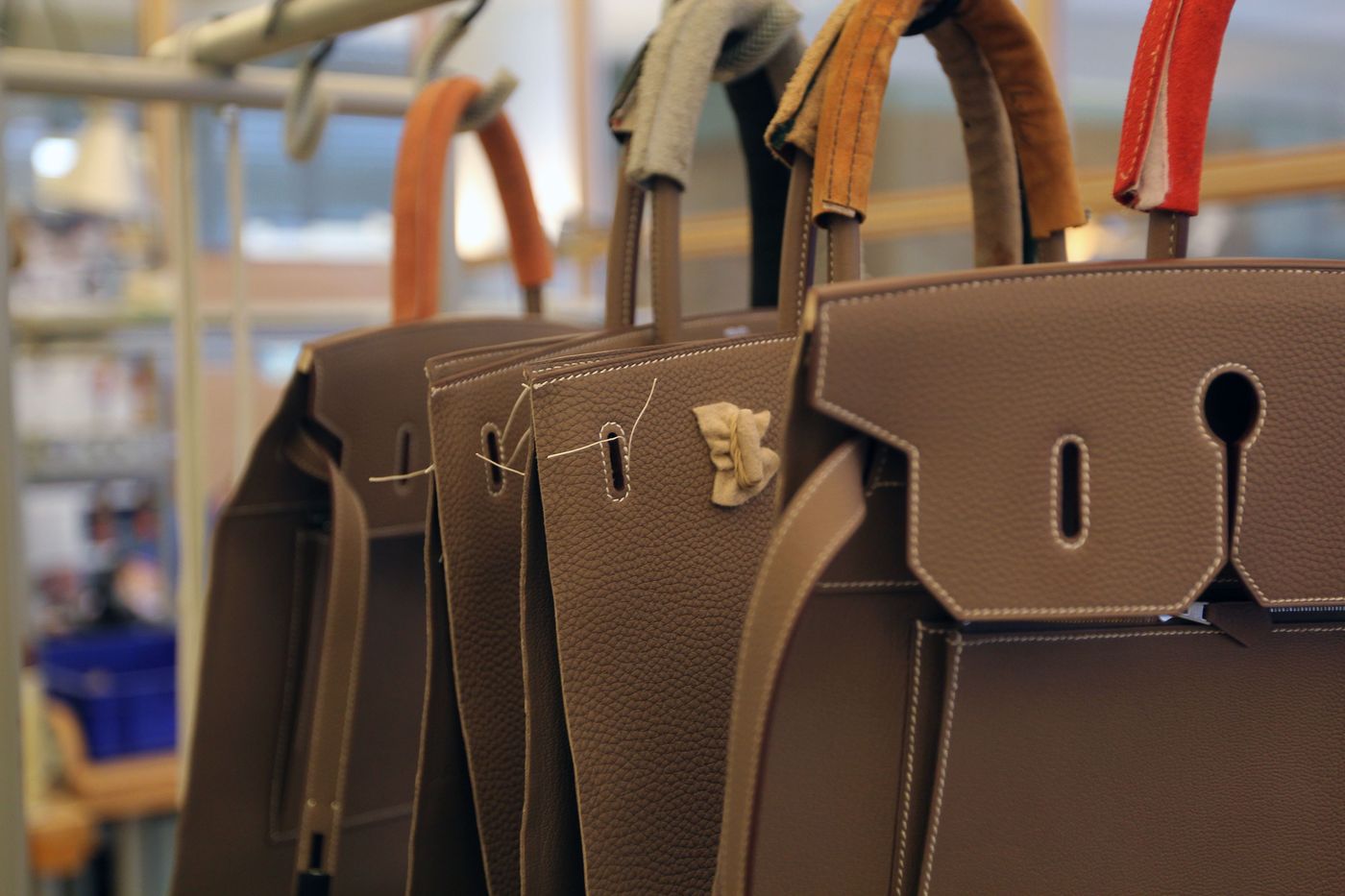
Photo by Costas Voyatzis, © Yatzer.
When you don’t take your time, time takes its toll. — François Fayolle (1775-1852)
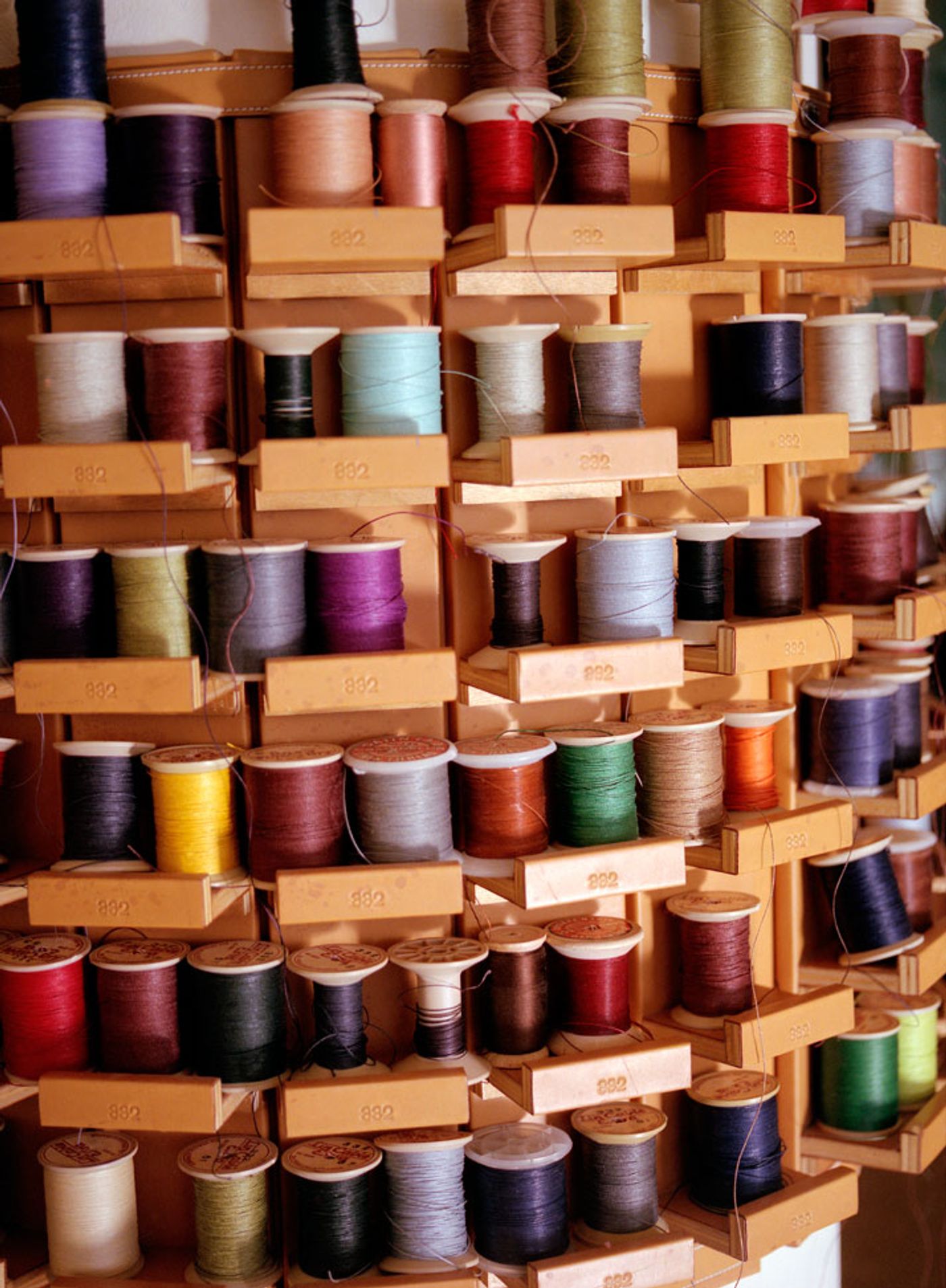
photo © Jérôme GALLAND, Hermès
Although this cult creation was nowhere in sight during my visit, many valuable pieces are eventually bequeathed back to the house by heirs who either feel the bags would be better cared for in their natural environment or are simply generous enough to part with them. After all, Hermès’ heritage extends beyond manufacturing — the house also specializes in overcoming accidents and easing the passage of time. “It’s all functional, not decorative,” says my tour guide, and I can’t help but believe her.
From its equestrian origins to its first steps into high society, Hermès has proven that choosing, cutting, and reading leather is akin to high art. Add a long work table, an experienced craftsman, and forty leather and hardware elements, and you’ve got a bag worthy of royalty. So the next time you hear someone complain about the mile-long waiting list for the iconic Kelly — named after the impossibly chic Grace Kelly, Princess of Monaco — tell them it’s worth the wait.
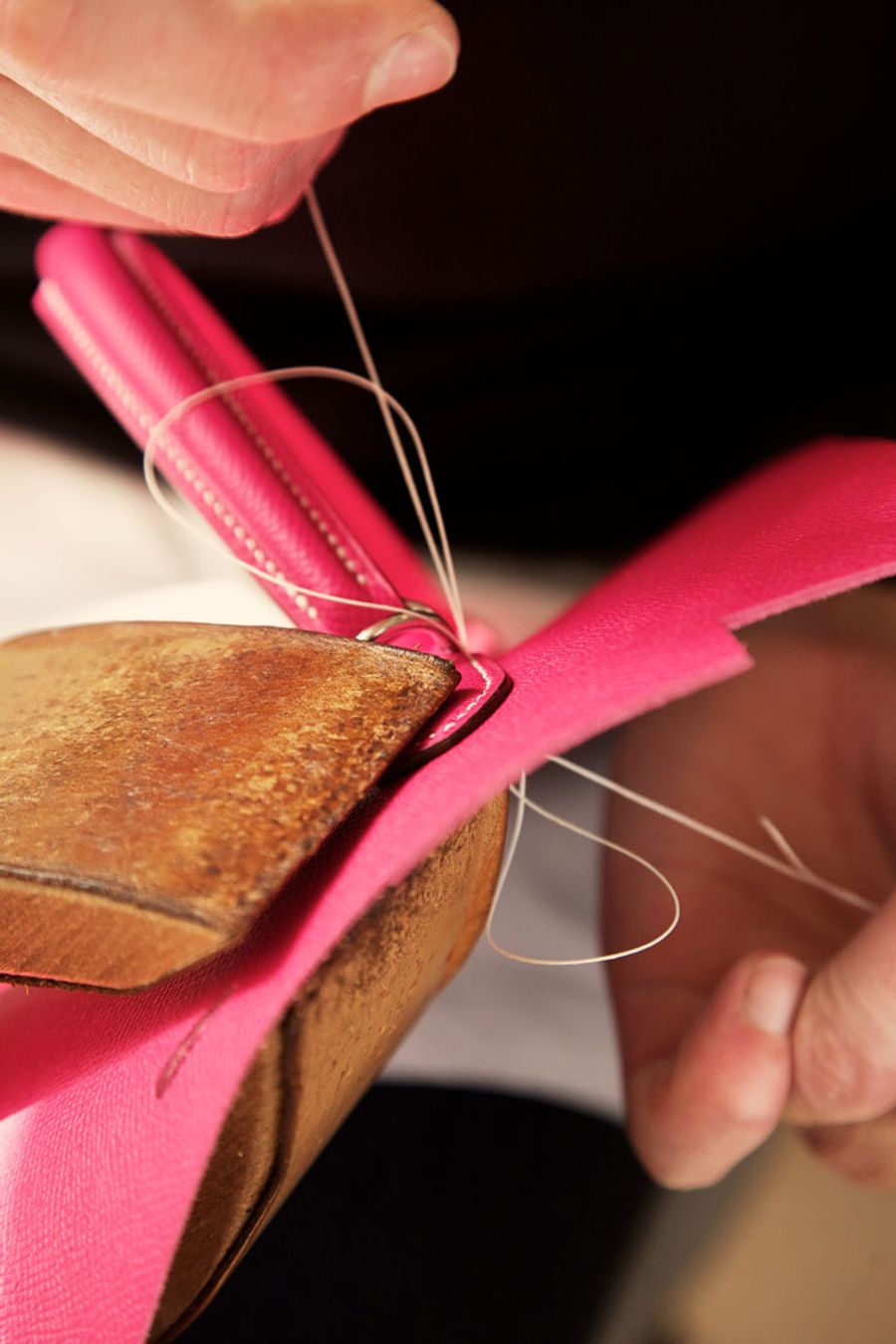
photo © Alfredo PIOLA, Hermès
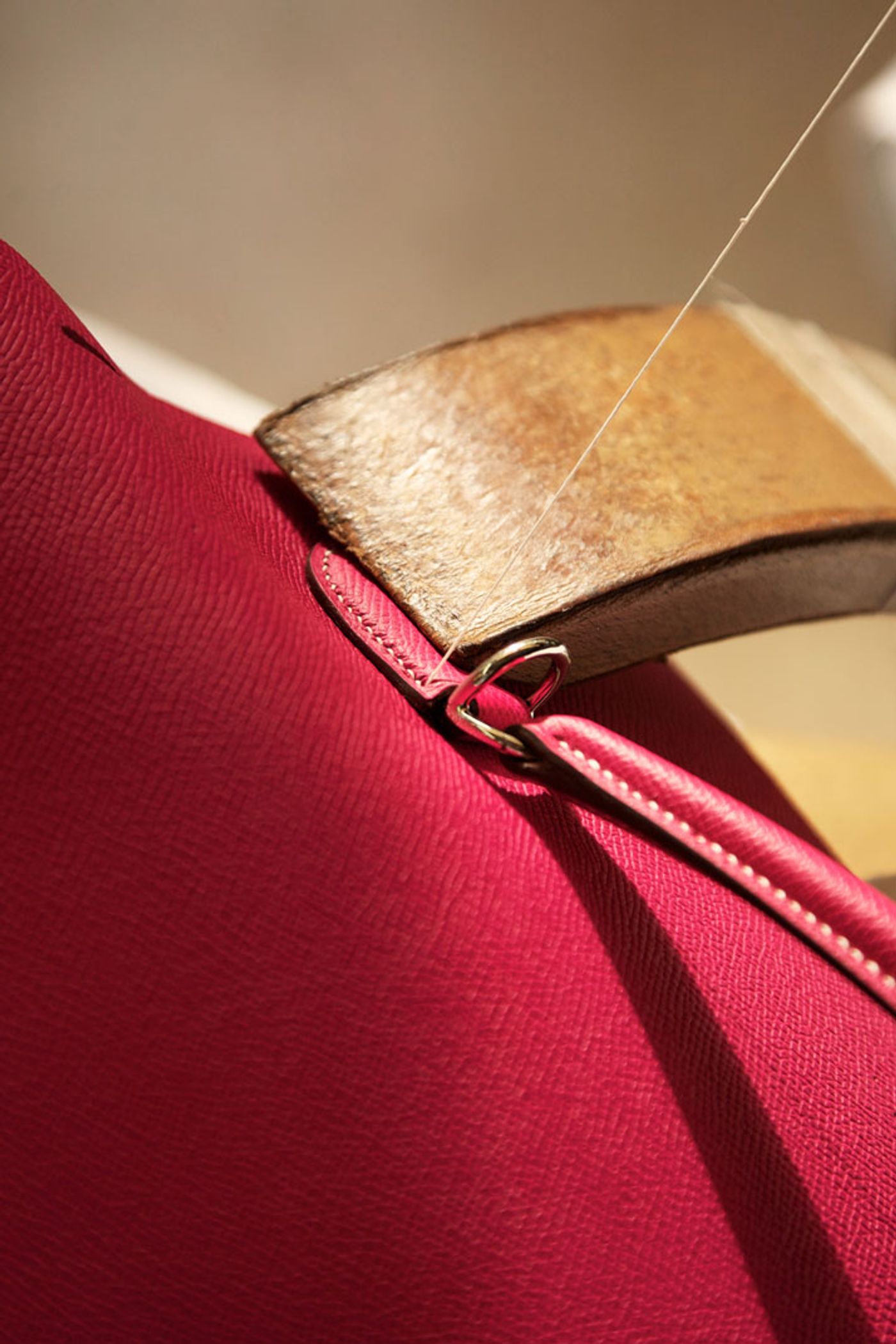
photo © Alfredo PIOLA, Hermès
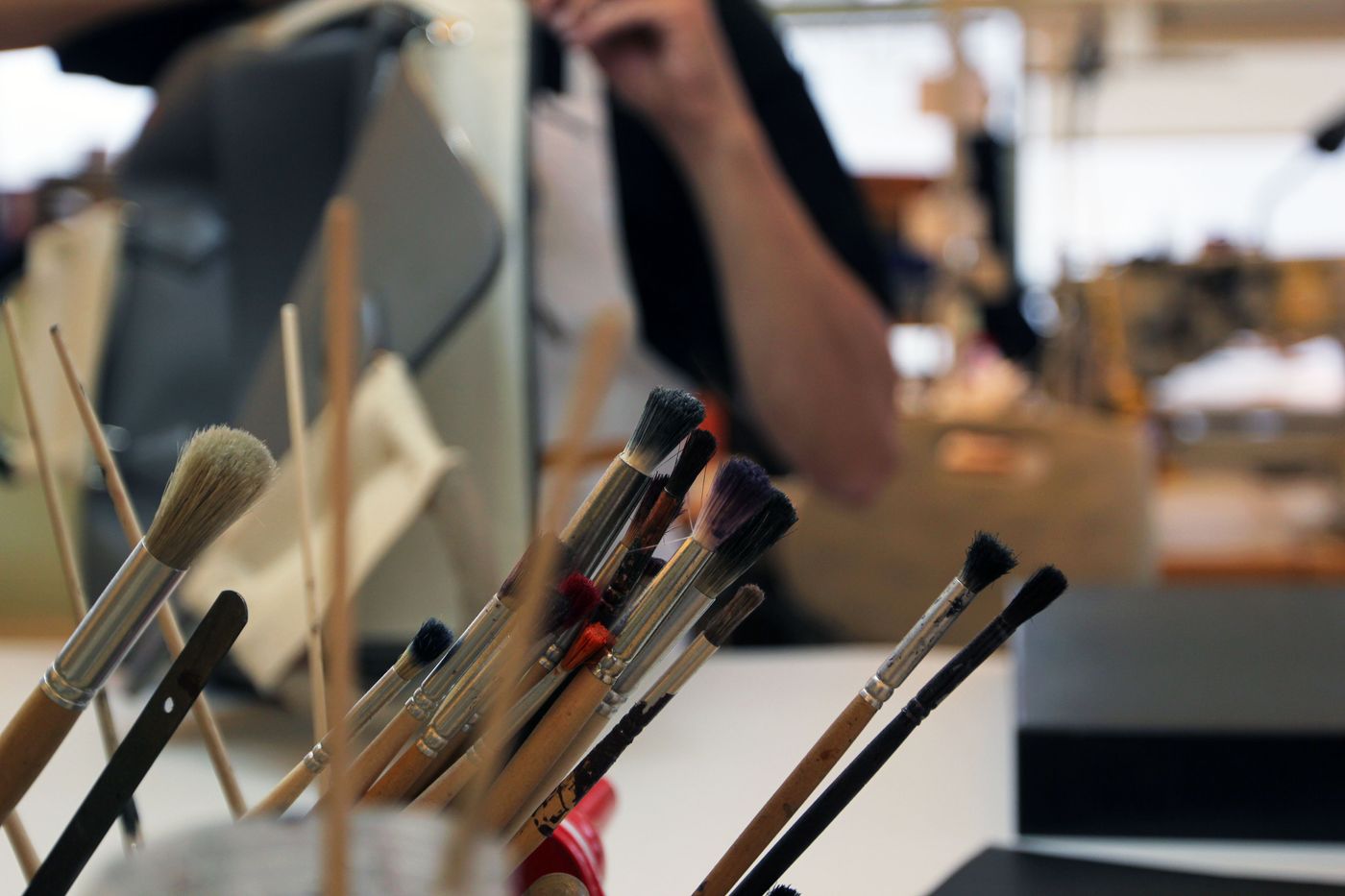
Photo by Costas Voyatzis, © Yatzer.
